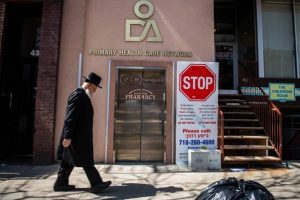By Denielle Patterson
Staff Writer 
This year marks the 42nd anniversary of the War on Drugs, an initiative started by President Richard Nixon in 1971 to prohibit and reduce the production, distribution and consumption of illegal drugs.
The 1960’s were a time of youth rebellion and music, literature, and drugs became symbols for the uprising. With the increase in usage of marijuana, opium and psychedelics, Nixon declared these substances illegal and harmful, without further scientific research of the medical safety of the drugs, according to Drugpolicy.org. The main drug control tactic of then and now relies on law enforcement restraint of the supply instead of other strategies like education and decriminalization.
When the initiative began, the issue with drugs was not the dangers or the risks, but who was associated with it. Drugsense.org reports that Chinese and Mexican immigrants were highly connected to opium and marijuana in the past, leading to the first anti-drug laws. And today, illegal drug use is largely related to African American and Latino communities.
Although these populations are no more likely to use or sell illegal drugs than whites, blacks were arrested for drug related violations 2-5 times more than whites from 1980-2008 as reported by Richard Branson of CNN. In his article “War on Drugs a Trillion- Dollar Failure”, Branson explains that these are the populations that are targeted, disproportionately criminalized and incarcerated.
A study from the Substance Abuse and Mental Health Services Administration published in September 2013 shows that whites use cocaine and heroin more than blacks. However, the reports from the Human Rights Watch organization display that African Americans and Latinos are 10.1 times more likely to be sent to prison for drug law violations than whites.
The roots and strategies of the War on Drugs have proved to be a complete failure, according to studies done in 2007 from the International Centre for Science in Drug Policy. Results show drugs have become cheaper and more potent over the last two decades. Also more people are criminalized for low-level violations, first time and non- violent offenders, than when the “war” was started.
When asked about the effect of the War on Drugs today, Kristina Bonrall, a senior Psychology major, declared it “useless”. ”It seems like America is wasting a lot of money on something that isn’t working,” Bonrall said.
Since the “war” was declared 42 years ago, America has spent about $1 trillion in efforts to restrict drug distribution through law enforcement. In an article written by Fareed Zakaria on Timesmagazine.com, it is expressed that 1.66 million Americans were arrested for drug law violations in 2009 alone—with 4 out of 5 being for possession. If the intention of the War on Drugs was to increase the number of Americans behind bars, then the campaign would be considered a success.
However, U.S. drug usage has not been reduced, but increased enough to make the U.S. the number 1 nation in the world for illegal drug use, according to a 2013 New York Times article entitled “Cheaper, Purer, Illegal Substances” by Katie Hunt.
The well-known picture of a law-enforcement team posing with piles of confiscated illegal drugs usually associated with the War on Drugs misconstrues the actual progression of the campaign.
A new approach is obviously needed to better address the drug problem in the U.S. Drugpolicy.org states that over 1.5 million people are arrested, prosecuted, and incarcerated each year in the U.S. for drug violations. Criminalizing the drugs and those that use them can create more of a problem than the drugs themselves. The Drug Policy Alliance, activists for better drug policies, stresses the idea of abusers being treated for their addictions instead of stigmatized and handcuffed.
With the many efforts used to reduce the drug supply failing, new strategies are needed, like drug education and addiction treatment. Drugpolicy.org states that the U.S. spends more than $51 billion annually to prevent drug distribution and use. The Drug Policy Alliance works to shift funding from the usual law enforcement tactics of the war to effective drug treatment plans and educational programs—new efficient strategies that the U.S. government could fund.
Conviction for drug violations for first time offenders or low-level violations can result in devastating consequences. Low-level offenders could be non-violent people with minimal or no prior criminal history. These people are incarcerated and labeled as criminals, often causing them to lose their employment, financial aid for school, the right to vote and more.
Michael Brown, a senior Criminal Justice major, posed a pragmatic question. “A lot of people do drugs; does that mean they’re all criminals?” Brown continued, “We need to find a way to deal with drug use that actually works.”
According to the National Institute of Justice, the evaluation agency of the Department of Justice, of the offenders released from prison, 60-80 percent of them experience recidivism, repeating the same crime or going on to commit other crimes, usually drug related. The National Institute of Justice also states that about 95 percent of offenders return to drug abuse after release from prison. These results add to the argument that the War on Drugs is failing to prevent drug use and distribution, and that new tactics are desperately needed.
Using educational strategies to replace law enforcement ones can aid in making the War on Drugs more efficient. This in turn would better aid in tending to the U.S. drug problem, ending racial inequality in drug law enforcement and prosecution, and finally change the view on drugs in this country and those who use them.



Be First to Comment